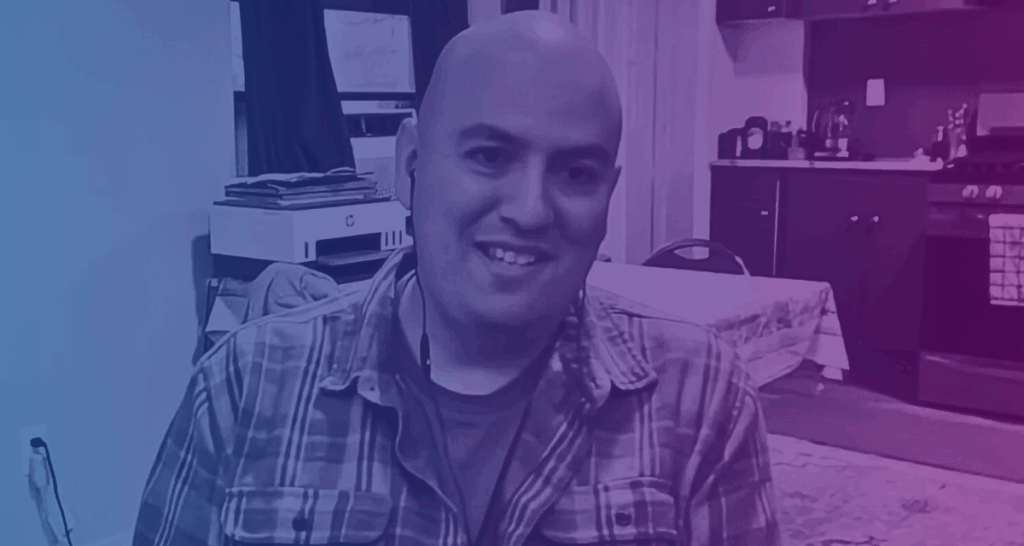
Budgeting an independent film is not for the faint of heart, especially when trying to raise production funds to pay for that budget. Finding money isn’t easy!
Yet, a film budget is your best tool to obtain the capital you need to make your independent film a reality.
When you combine elements like shooting location, script breakdown and film budget, you will gain a deep understanding of what your film needs to be successful. When you know what your independent film needs, it becomes easier to pitch realistic expectations to potential investors.
Investors, banks and finance professionals love grounded, realistic expectations. Trust us, we help finance movies!
Once your film is fully funded, a budget will serve as your roadmap, guiding you from prep to exhibition.
In this article we focus on budgeting an independent film. We’ll cover the why and how. We will even talk about the effect shooting location and film tax incentives have on your bottom line as well as the software available to create breakdowns, budgets and actualizations.
Included is a free sample production budget for a typical independent film so that you can make your own production budget mockups.
Why is a budget important for my independent film?
An independent film budget lays the groundwork for financing and completing a film. The film budget is an indispensable document after which everything follows, with few exceptions. It will become your trusted and reliable friend from start to finish. You cannot make a film without one.
A thoroughly built film budget should be capable of providing a macro and micro view of a film’s essential details simultaneously.
It will allow you to start making decisions, pitching to financiers, filling your coffers with cash, sending purchase orders, hiring employees and paying wages, renting kits and locking down locations.
When you have actualizing budgeting software, such as Showbiz Budgeting, you can track your costs live. A line item or expense will never catch you by surprise, and it shouldn’t.
Understand Your Film’s Finances
You must know where you stand financially at any given moment. This will empower you to continue making decisions for the benefit of the film’s creative success.
Producers and accountants will insist on having this information handy. It will simplify payroll and keep your film solvent.
If you plan on bonding your film, the bond company will require these reports weekly and sometimes daily to guarantee banks and investors your independent film is meeting its financial goals.
Even without a bond company, you need to know where you stand financially. You need to know if you can keep paying the bills.
Can you feed everyone tomorrow? Pay overtime on wages? Are there overages, and by how much? How are those overages getting covered? Are you taking money out of post-production? Do you need to raise more money?
These questions may surface, and you need to be ready to answer them.
Overall, a film budget is the only way to map out your film’s financial needs, show financiers you know what you’re doing, stay grounded financially during production and evaluate the total cost and value of the film when all is said and done.
When should I write a film budget?
Write a film budget after you break down the script, create a schedule specifying pages-per-day and always before you start pitching to financiers. Ground your budget in actual costs, based on standard wages, fringes, kit rental fees and other important line items.
Two film budgets will be necessary, intended for separate uses.
The first iteration of your film budget will be an early simplified document detailing major line items. The preliminary production budget will be used to pitch your film to investors, to display your professionalism and win funds.
The second iteration of your film budget will be in full detail. The detailed production budget is what you will rely on to carry you through to delivery to festivals and distributors.
To get an idea of what a budget should look like and to create your own mock-ups, check out our free sample film budget breakdown!

Build a Preliminary Film Budget for Financing
The first set of numbers you mark down in your preliminary film budget should be as detailed as possible with the limited information you have. You will need this early, more generalized film budget, to pitch the film to investors. It’s your first chance to build trust and raise the money you need.
Include realistic, down-to-earth numbers based on quotes from vendors, location or permit fees, standard crew wages, fringes, equipment rentals and more. Always pad your figures to cover financing fees and unforeseen expenses.
This first iteration of your film budget is your chance to show the investors the honest nitty gritty financial details of your film. They’ll be more apt to trust you with their investment if they know you’re going to spend it appropriately.
Prove You Can Pull It Off
Even when you hire a sales agent to sell foreign territories, they and the distributors will want to know if you can pull it off. They will evaluate aspects of your film including script, art, attached talent, hired lawyers or line producers and, of course, your film’s budget.
If you plan on seeking fiscal sponsorship, applying for grants or both, a budget is a common application requirement among non-profits that support films.
They will ensure you have realistic figures and have properly allocated funds based on their experience of what success looks like. It’s important to focus on all your film’s needs and never leave out post-production or marketing costs, as so many filmmakers do.
Impress banks, financiers and film offices with a professionally built budget using a template. Better still, use industry-standard software to do it for you.
A film finance professional or bank will recognize a budget created using Movie Magic or Showbiz Budgeting at first glance and they’ll be inclined to keep reading.
Once you’ve won over the financiers, banks, a fiscal sponsor, sales agents and distributors with your next hit indie film, it’s time to start spending money. Get the ball rolling by hiring a professional to help build a detailed production budget.
Build a Detailed Film Budget for Production
When you are ready to start pre-production, it’s time to hire the necessary personnel to write a detailed production budget that covers every line item necessary to plan, shoot, edit, deliver, market and sell your independent film.
That’s right, if you want your film to get noticed on the festival circuit or during awards season, you’ll want to put money aside for festival entry fees, marketing materials and a publicist! The key here is to think far ahead about what you need.
Depending on the size of your film, you may want to hire another producer, line producer or production manager to help build a detailed production budget, using your preliminary budget as a guide.
See our detailed film budget sample where we cover every line item you need to get your independent film made. More samples are available here.
Before you can build that detailed film budget, you need to have an in-depth knowledge of your script and all the moving parts necessary to get the film done. Enter: the script breakdown.
How do you make a script breakdown for a film budget?
To create a detailed film budget, you need to break down your script into its basic components. There are two things you need to get to the bottom of; how long it’s going to take to shoot the film and everything else that will cost you money or slow you down.
You have two options for conducting a breakdown; You can use professional breakdown and scheduling software or get out those colorful highlighters and pens and do it by hand.
Typically, a line producer or 1st Assistant Director will create the script breakdown. On a small budget, you might be doing it yourself. If you have the funds raised and ready to be spent, it’s time to hire that 1st AD or line producer and commence pre-production.
How a Breakdown Works
The result is a series of documents, a breakdown, that express clearly what every scene in the script requires to get made.
Every page should be divided into eighths so that you can quickly calculate how many pages there are in a scene. For scenes that require the same location, page numbers can be tallied.
Generally, you should be shooting 3-5 pages per day. If you are shooting a low-budget indie film that is lean on complexity, you can certainly push for more, within reason.
Now, equipped with total pages you need to shoot in a particular location(s), you can estimate how long you will need that location for.
Finally, you have arrived. You can estimate cost and begin balancing priorities to create a schedule and a film budget.
Don’t forget everything else!
The other major part of a script breakdown encapsulates everything else that is going to cost you money or add days to your schedule. The typical breakdown software, such as Movie Magic Scheduling, will ask you to fill in the following categories.
Cast and Background Actors
Whether you work with SAG-AFTRA actors will have a significant effect on the cost of this category. Depending on the size of you independent film, you may not hire union talent and that will save you a hefty chunk of cash. Though, in many cases it is unavoidable. A big name or two will help you sell the film and get distribution and they’ll cost you.
If background actors are more that just your friends, you may end up using a service such as Central Casting. That service will cost you on top of standard SAG wages. Don’t forget fringes – more on that in a moment.
Stunts
Practical effects and stunts can cost serious money. Safety is the name of the game in this category, and you will pay for it. Stunts can run the gamut, from a car chase to a fist fight. It all needs to be choreographed professionally and executed safely with the proper equipment.
Special Effects
Elaborate practical effects including squibs or pyrotechnics land in this category. Again, safety is key. You’ll need to hire a professional to oversee the equipment and choreography of setups requiring practical special effects.
Art, Production Design, Set Dressing and Greens
Considering the environment of the scene, is there anything particularly expensive put forth in the script that warrants jotting down? The look of your film depends on the physical materials and artisans that shape those materials to bring the world to life. Don’t underestimate art, it’s going to fill the screen the entire movie.
Props
Pay attention to any special props that pop up in the script. These are things that actors will have to interact with, distinguishing them from set dressing. Often props will have to be in working order and rented from a prop house or purchased from another source.
Wardrobe, Hair and Makeup
Often genre determines the needs of wardrobe, hair and makeup. Are you creating a slasher film that requires lots of bloody practical special effects makeup? Maybe it’s a period piece that has actors in fantastical vintage coats and enormous rolled hair. It could be subtle things too, like acne, a scar or sweat requiring upkeep by a specialist and the purchase of lots of product.
Specialty Equipment
You can start to get an idea of the type of equipment you might need that lies outside the norm here. Any special dolly shots you have in mind, for example, may run up your bill with a Fischer dolly, crane or drone rental. Certain pieces of equipment also require a specialized crew member to operate.
Animals and Animal Wranglers
Using live animals can be costly but is sometimes unavoidable. Know that animals have their own set of working rules and best practices and require a trainer or wrangler to ensure the safety and wellbeing of the animal as well as the cast and crew members that need to interact with them.
Visual Effects
You might be surprised to see visual effects show up so early. Don’t be. If your script requires any amount of CGI or digital fluffing, plan to pay for it during production and in post-production. For the best results, you’ll need to hire a visual effects supervisor to work on set with your DP to plan certain shots and obtain “plates” to be used in post-production.
How will a schedule effect my budget?
Once you have a full breakdown of all of the moving pieces necessary to breathe life into your independent film, it’s time to create a schedule. A film’s schedule is a balancing act of priorities that will inform your production budget by tracking who and what needs to be where and when and for how long.
For example, if you know how long a particular actor needs to be in a certain location, you can more easily calculate the cost of those line items.
This process only gets infinity more complex, adding in all the elements necessary for a particular scene set in a certain time and place. Ultimately, by combining a budget and schedule, you can calculate cost.
Budget More Than The Bare Minimum and Track Spending
Always pad these figures and anticipate the unknown. You never know when a storm could roll in or a COVID delay might strike.
A schedule will also allow you to track spending over time. Tracking spending is called actualization.
You can efficiently compare how much you planned on spending each day and up to any point in the production process with how much you’ve actually spent.
If there are overages, you better know about them and get ahead of them. If there is excess money, great! Put it somewhere useful or add it to your contingency.
Once you have the breakdown in hand and are starting to sketch up a schedule, you need to break the budget into its appropriate parts – organize it for production.
How is a film budget organized?
A budget is divided into two parts over three sections. Above-the-Line (ATL) and Below-the-Line (BTL) make up the two parts and the three phases of production make up the sections.
Your film budget should flow naturally from one priority to another. Keeping your budget organized this way signals to investors you know what you’re doing.
Priorities that are grouped together should make sense together. Which group an expense lands in often signifies when the money needs to be spent or demarcates percentage of budget overall. Hence the split of line items between ATL and BTL.
Wages will be a major factor in your budget, often responsible for approximately half of an independent film’s expenses overall.
Above-The-Line (ATL)
Above-the-Line line items include expenses that are necessary before you ever roll camera. Many of the deals you need to complete during pre-production are contained ATL.
Major talent and department heads are generally part of this section. That includes screenwriters or the purchase of a script, producers, actors, the director, the cinematographer and other major players responsible for the logistical or artistic integrity of the film.
For certain major actors and even some directors, a guarantee fee is the expectation. Don’t be surprised if you have to pay this fee upfront before anybody arrives for rehearsal.
This section can easily become your most expensive thanks to it’s heavy-hitting line items. This is also where you would consider adding line items for financing, paying that 1st AD for the breakdown and schedule and any other prep that is necessary to get your film on its feet.
Below-The-Line (BTL)
Below-The-Line expenses can cost a hefty sum in their own right. This section generally involves jobs, rentals and materials necessary for production and post-production.
Labor will typically outweigh all other expenses.
These costs may not be obvious in your script breakdown. That’s because they are not always unique to the script. Rather, they are the wages and equipment you need to pay for when you are ready to get the job done. Without these craftspeople, you wouldn’t have a picture.
How do I budget for crew wages and fringes?
Wages and fringes can make up a hefty percentage of your total budget. As you can see in our example of a typical film budget, labor can cost as much as half of the budget.
Some fees, like those paid to talent or a director, will have to be paid up front, or a portion of which will have to be paid up front as a guarantee before you even roll camera on your independent film.
Before you can calculate the cost of labor, you need to decide whether your crew will be union or non-union.
Typically, you’re going to need to hire union professionals. Each craft will have their own local and their own negotiated terms. Many guilds will have standards they won’t budge on, other locals will negotiate terms with you.
Some guilds even have special labor rates for independent films on a sliding scale based on your budget. Another reason a thorough preliminary budget is important and necessary!
To get a gauge of the standard wage rates, check out our Showbiz Labor Guide! We detail the latest union rates from every guild and local for each position based on the location of your shoot.
Don’t Forget the Fringes!
Fringes play an important role in your budget, and can add a decent chunk to cost. Fringes are all the additional costs associated with hiring a crew member on your independent film.
These include employer-paid state and federal taxes, union health and pension plan contributions and other fees that are paid to outside agencies on top of your crew’s wages.
Included in fringes are the costs of hiring a payroll company. This includes payroll taxes, workers’ compensation administration and payroll handling fees.
Ultimately, many of these expenses will be handled by your payroll company. The payroll company then pays out the appropriate percentage amounts to the government and unions.
How do tax incentives and location effect a film budget?
Where you shoot your independent film can have a major effect on how much the film will cost and even how much money you can raise with debt financing.
If you’re shooting location is flexible, choose a handful of states where you could shoot and explore state film tax incentive programs.
Since each state legislature decides on the rules and how well funded an incentive is, these programs vary from state-to-state. Some states don’t have a program at all. In other states, you can earn even more cash back and double down with a local incentive!
Scoring a state tax incentive can provide a guarantee to finance against and lift up your budget.
To get a state tax incentive, film offices need to know if you can pull it off. Offices have a limited amount of funds or credits they can disburse or promise in a year. So, if they earmark funds for your film and you don’t come through, the money is tied up and lost for another film.
To prove you can pull it off, they’re going to evaluate your team, financing, and, you guessed it, your film’s budget. They want to ensure your numbers look legitimate before promising anything.
If you need help deciding on a location best suited for your film, try consulting with a film tax incentive expert. These professionals can help you look for a state that will work for your budget.
What is a contingency and do I need one?
A contingency is like an insurance policy you’re funding yourself. While you should and will almost always be required to purchase production insurance, payroll companies, rental companies, banks and more will expect it, you need to have a contingency as well.
Always include a contingency in your independent film budget.
Talk about being taken seriously – this is the ultimate way to prove you have the unexpected in mind when pitching your film to investors. It’s responsible and most financial professionals won’t accept your film budget without one.
The contingency should be 8-15% of the overall budget. For example, a $3 million movie with a 10% contingency should budget $300K for a contingency.
This money is usually controlled by a producer, or your bond company and treated like an insurance policy. If unforeseen over time, reshoots, major losses or disaster occur you have to petition this gatekeeper and make a case for why you need to dip into the contingency.
Never underestimate a good backup plan, the success of your film could depend on your contingency. Plus, if you don’t use it, score! You can use those funds to beef up marketing or pay down debt ahead of time.
Use a film budget to raise money and make an independent film
Building a thorough and practical film budget takes time and lots of research. We promise, it’s worth it! With a sophisticated, professionally built budget, you can hit the ground running and start raising the cash you need to begin pre-production.
A detailed script breakdown and schedule are your keys to the budgeting castle. Once you have the money you need and a good budget to boot, you can start hiring employees, paying talent guarantees, locking down locations, and more.
Before you know it, your budget will have paved the way from financing to marketing and distribution. You and your team will rely on it every step of the way. A practical budget paired with actualized costs will provide the backbone you need to get your film on the festival circuit and on the big screen.
Ready for The Next step? Learn about film financing.
